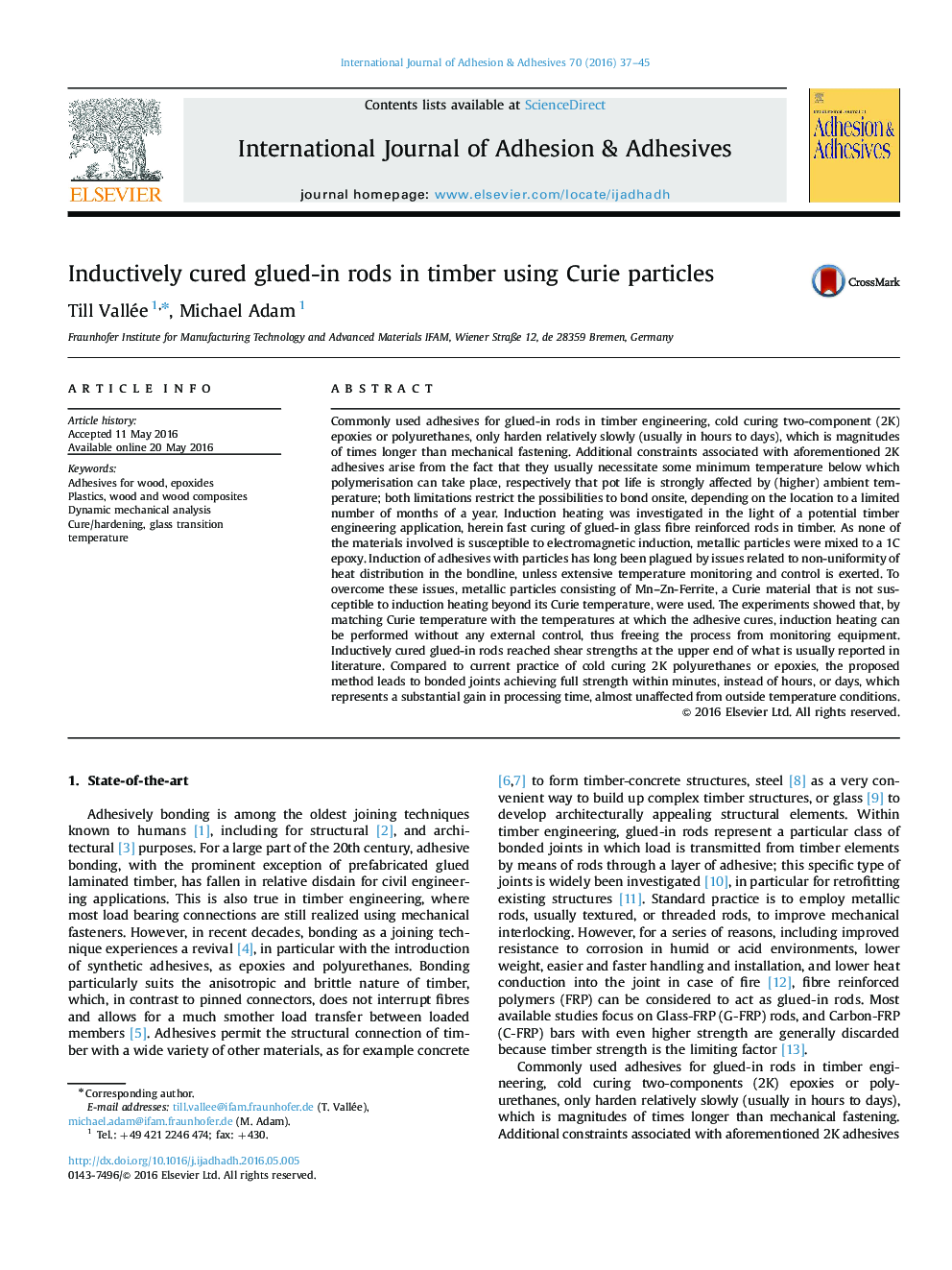| Article ID | Journal | Published Year | Pages | File Type |
|---|---|---|---|---|
| 776027 | International Journal of Adhesion and Adhesives | 2016 | 9 Pages |
Commonly used adhesives for glued-in rods in timber engineering, cold curing two-component (2K) epoxies or polyurethanes, only harden relatively slowly (usually in hours to days), which is magnitudes of times longer than mechanical fastening. Additional constraints associated with aforementioned 2K adhesives arise from the fact that they usually necessitate some minimum temperature below which polymerisation can take place, respectively that pot life is strongly affected by (higher) ambient temperature; both limitations restrict the possibilities to bond onsite, depending on the location to a limited number of months of a year. Induction heating was investigated in the light of a potential timber engineering application, herein fast curing of glued-in glass fibre reinforced rods in timber. As none of the materials involved is susceptible to electromagnetic induction, metallic particles were mixed to a 1C epoxy. Induction of adhesives with particles has long been plagued by issues related to non-uniformity of heat distribution in the bondline, unless extensive temperature monitoring and control is exerted. To overcome these issues, metallic particles consisting of Mn–Zn-Ferrite, a Curie material that is not susceptible to induction heating beyond its Curie temperature, were used. The experiments showed that, by matching Curie temperature with the temperatures at which the adhesive cures, induction heating can be performed without any external control, thus freeing the process from monitoring equipment. Inductively cured glued-in rods reached shear strengths at the upper end of what is usually reported in literature. Compared to current practice of cold curing 2K polyurethanes or epoxies, the proposed method leads to bonded joints achieving full strength within minutes, instead of hours, or days, which represents a substantial gain in processing time, almost unaffected from outside temperature conditions.
